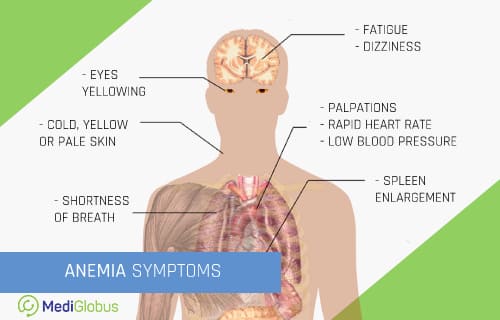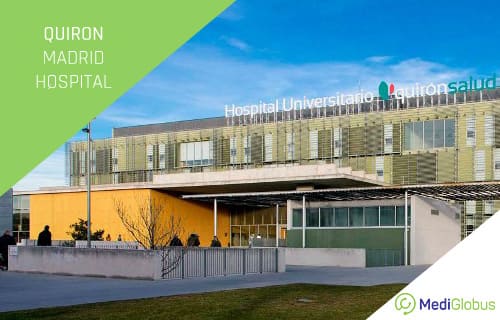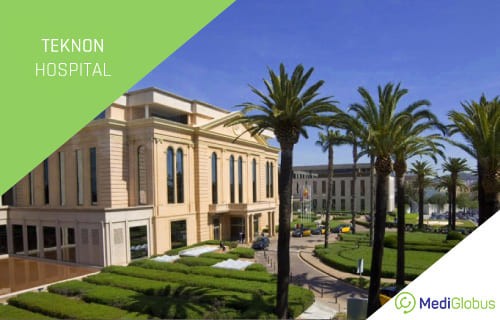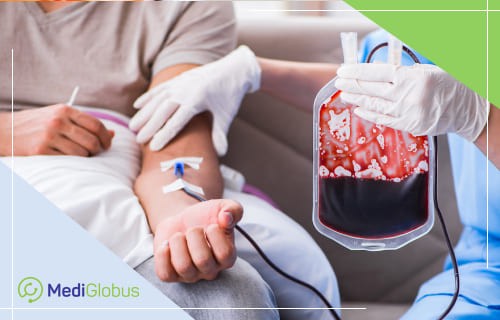Aplastic anaemia is a rare but dangerous blood disease that affects bone marrow. It occurs in six cases per million. Severe anaemia without proper treatment can reduce the quality of life or even lead to death. Thanks to modern therapeutic methods, this disease is completely curable in 70-80% of cases. In this article, you can find out how aplastic anaemia is treated in Spanish clinics, why patients choose this country, and how to save on treatment costs.
What is aplastic anaemia?

Aplastic anaemia is a disease in which the body does not produce enough blood cells. Normally, the bone marrow creates red and white blood cells as well as platelets. Thanks to them, the body is supplied with oxygen and protects itself from diseases and bleeding.
In anaemia, stem cells that are in the bone marrow are damaged and unable to perform their function. This condition is called hypoplasia. The condition where stem cells are absent at all is called aplasia.
Aplastic anaemia can be acute or chronic.
Aplastic anaemia can sometimes be asymptomatic. In moderate and severe cases, the patient can suffer from:
weakness and dizziness;
shortness of breath and rapid heartbeat;
pale skin;
frequent diseases and bleeding;
skin rash;
headache.
Aplastic anaemia can occur from a variety of causes, such as autoimmune diseases or past infections, side effects of cancer treatment or chemical poisoning. Sometimes anaemia occurs during pregnancy.
Diagnostics of aplastic anaemia in Spain
You can diagnose aplastic anaemia at any of the multidisciplinary clinics in Spain. It will take only 1-2 days to undergo the whole complex of procedures on an outpatient basis. As soon as the diagnosis is confirmed, doctors may start treatment.
Blood test
During a blood test, the doctor measures the number of red cells, white cells, and platelets. Their count depends on the sex and age of the patient, as well as their general health condition. Different diseases affect the test result. Aplastic anaemia will reduce the number of all blood particles.
The price of a full blood test in Spain is from €300.
Bone marrow biopsy
The main method of confirming the diagnosis of aplastic anaemia. Using a special needle, the doctor extracts a sample of bone marrow, usually from the patient’s leg bone. The procedure is performed under local anaesthesia. The sample is examined under a microscope. If the patient has anaemia, the doctor will see fewer blood cells. In addition, this method helps distinguish anaemia from other diseases that may cause similar symptoms.
The price of a bone marrow biopsy in Spain is from €2,500.
If doctors confirm the diagnosis, they can prescribe additional tests to determine the cause of the disease. This may be a serological test for infection or a peripheral chromosomal analysis.
Treatment of aplastic anaemia in Spain
The course of treatment prescribed by the doctor depends on the stage of the disease, the age of the patient and their general condition. Emergency hospitalization is only necessary in case of severe aplastic anaemia when less than 25% of bone marrow works normally.
As a treatment, the doctor can offer medication, a blood transfusion or a bone marrow transplant. In most cases, if anaemia is acute – for example, caused by pregnancy or chemotherapy – it will go away by itself over time. Your doctor will choose the best treatment according to the severity of the patient’s symptoms.
Blood transfusion | A blood transfusion can’t completely cure aplastic anaemia. However, it is possible to eliminate symptoms and avoid large bleedings.
During the procedure, the patient is transfused with donor blood from a blood bank. This makes it possible to temporarily make up for the lack of blood cells in the body, but over time the resulting cells die off and the symptoms return.
Although there are no formal limitations on the frequency of the procedure, too many transfusions can cause side effects. Red blood cells, which contain iron, can accumulate in the body and cause damage to vital organs. To avoid this, doctors prescribe medicines that help the body get rid of excess iron.
Over time, the immune system may begin to release antibodies to donor blood cells. This reduces the effectiveness of the procedure. If this happens, doctors prescribe special drugs – immunosuppressors. They weaken the immune system.
Patients with severe aplastic anaemia may need a blood transfusion more than once a week. |
Medicament therapy | Depending on the cause of aplastic anaemia, doctors prescribe different drugs.
In anaemia caused by autoimmune disease, immunosuppressors are used. They help weaken the immune system. This allows the bone marrow to recover and function normally. However, these drugs make a person more vulnerable to infectious diseases. In addition, if you stop taking them, anaemia may return.
Bone marrow stimulants help stem cells produce the blood cells they need. They can be used as an independent treatment or together with immunosuppressors.
Since people with aplastic anaemia are often ill, doctors prescribe antibiotics and antiviral drugs. For patients with anaemia, a simple infection can turn fatal, which is why medication therapy is so important. |
Bone marrow transplant | This is the main method of treating aplastic anaemia in children and young people. In Spain, bone marrow can be transplanted from a compatible relative or from a donor base.
The patient must undergo radiotherapy or chemotherapy before the procedure. This is done so that the transplant isn’t rejected. After that, healthy stem cells taken from the donor are injected into the patient’s bloodstream.
After the bone marrow transplant, the patient needs to spend 5-6 weeks in the hospital. They take medication during this period, which weakens the immune system. During the rehabilitation period, the patient remains vulnerable to infections, so he should stay in sterile hospital conditions under constant supervision of doctors and nurses. |
In what hospitals can you treat aplastic anaemia in Spain?
Quiron University Hospital in Madrid
Quiron University Hospital in Madrid is a multidisciplinary medical centre. They are one of the healthcare leaders in Spain and Europe. The Clinic is ISO accredited.
In 2019, 21 specialists from the Quiron Madrid Hospital were included in the list of “100 best doctors of Spain” according to the FORBES magazine.
At Quiron Clinic, each patient is treated by experienced specialists who follow principles of individual approach and multidisciplinarity. The centre has a Blood Bank, which reduces waiting times for patients who need a transfusion.
Among the patients who regularly use the services of the Quiron Clinic are world-famous sportsmen, stars and politicians.
Treatment of aplastic anaemia in children at the hospital Quiron Madrid is carried out by Dr Luis Madero López. He leads the paediatric hemato-oncology department. He is also the head of a research project on stem cells at the “La Princesa” Institute.

A bone marrow transplant from an unrelated donor at the Quiron Clinic costs from €160,000.
Teknon Clinic

Teknon Clinic is one of Barcelona’s leading medical centres. This institution has JCI accreditation, an honorary certificate of the Generalité de Catalunya, and the European Foundation for Quality Management mark. Teknon Clinic has been recognized by the International Medical Tourism Magazine as the best clinic in Spain.
Doctors of Teknon Clinic are included in the list of “TOP 100 doctors of Spain”, according to FORBES magazine.
The clinic operates the Institute of Regenerative Medicine, where they develop and implement methods of stem cell treatment. Since 2003, when this institution was opened, 1,300 patients have undergone treatment there.
At this clinic, a bone marrow transplant from a related donor will cost from €120,000.
Navarra University Hospital
Navarra University Hospital is one of the most popular in the country. 95% of the patients treated there were satisfied with the result. The hospital is actively cooperating with foreign institutions and international research programs. In 2004, the clinic was accredited by JCI.
Unlike less developed countries, diagnosis and treatment at Navarra University Hospital are quick and effective. In 24 hours the patient can fully undergo all necessary examinations and receive a diagnosis, and in 72 hours – the optimal treatment scheme.
This doctors of the hospital have been performing bone marrow transplants for over 20 years. They successfully operate on patients aged 3.5 years and older.
The price of a bone marrow transplant from an unrelated donor is from €152,000.

Comparison of aplastic anaemia treatment prices in different countries
Treatment in Spanish clinics is carried out according to European standards, and at according prices. However, compared to such leaders of the field as Germany, the UK, the USA or Israel, the price of aplastic anaemia treatment in Spain is cheaper. However, lower-cost does not necessarily mean lower quality. Spanish clinics use the same technologies, protocols, and have the same international certificates as more expensive medical centres.
| Procedure | Germany | Spain | Israel |
|---|---|---|---|
| Bone marrow transplant from a related donor | from €200,000 | from €120,000 | from $160,000 |
| Bone marrow transplant from an unrelated donor | from €250,000 | from €160,000 | from $178,000 |
Features of aplastic anaemia treatment in clinics in Spain

The success rate of aplastic anaemia treatment in Spain is 90%.
Medical tourists choose Spain because of their access to the International Bone Marrow Donor Bank (WMDA). This opportunity saves the lives of hundreds of patients who are not compatible with their relatives. The bank’s database includes over 700,000 donors.
Another advantage of treatment in Spain is high-quality rehabilitation. Unlike in third-world country clinics, doctors pay a lot of attention to the recovery process. A patient can count on attentive care by the nurses, personal rehabilitation programme developed by doctors of various fields, and highly comfortable conditions of stay. The room where the patient remains after bone marrow transplantation is kept in maximum sterility and equipped with HEPA filters to reduce the risk of infection.
In addition, the speed of rehabilitation is affected by the warm seaside climate. Many medical tourists choose Spain for its nature and architecture. The country’s medical centres are located in the heart of urban life – Madrid, Barcelona, Navarra. Patients and their attendants can enjoy the tourist benefits of this country.
Medical tourism life hacks from MediGlobus specialists
Treatment in Spain is in the same price category as in other European countries. However, there are opportunities to save on costs:
The flight is cheaper if you take tickets for the non-tourist season – from November to February. Late night and midweek flights are more available, especially for low-cost companies. In addition, you should pay attention to possible promotions and discounts.
You don’t have to redo the tests that were made home. It will suffice to translate the documents into Spanish or English. Some clinics offer translation services of medical records for an additional fee. If a patient has doubts about the results of domestic laboratories, it is possible to perform a histological revision, which will be cheaper than a repeated analysis.
You can save a lot of money on accommodation by not having an accompanying person in the hospital. Of course, in case of a child’s illness, having parents nearby is very important. But in other cases, there are alternatives. It is often possible to rent a cheap hotel room or an apartment near the clinic.
If the patient speaks English on a medium level, they can do without the services of a personal interpreter. Doctors who work in clinics in Spain have received a European education, and they can easily communicate with the patient in a simple and clear language, without overusing complex medical terms.
Resume
Aplastic anaemia is a rare blood disorder that can be fatal in severe form.
The efficiency of treatment of severe aplastic anaemia in Spanish clinics is 90%.
Aplastic anaemia may be a temporary or chronic condition. It is caused by various diseases, medical and chemical preparations, chemotherapy and radiotherapy, and pregnancy.
Symptoms of aplastic anaemia can be eliminated with medication or blood transfusions, but a bone marrow transplant is necessary for complete recovery.
Patients treated for aplastic anaemia in Spain have access to an international bone marrow donor bank.
Treatment of aplastic anaemia in Spain can be performed at the Clinics Quiron Madrid, University Clinic of Navarra or Teknon. The cost of bone marrow transplantation in Spain is from €120,000.
If you or your relatives are interested in the treatment of aplastic anaemia, leave your request on the website by clicking “Get a free consultation” button. One of our coordination physicians will call you back and help you find a clinic for treatment, as well as answer all your questions and help with the organization of the trip.





